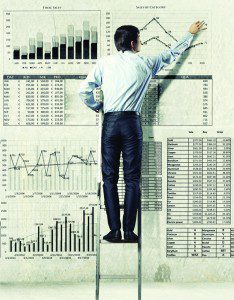–St. Thomas Aquinas —
 It’s that time again, the time when I have to roll out some trusty analogies to make some points about the markets. In normal times some investors try to time the market and individual stocks. That means buy markets and stocks when they are low and sell them when they go up. Then repeat the cycle over again. You can get away with that a few times, but then the grim reaper comes in for his due. With the market at new highs now, investors are happy, but I wouldn’t say euphoric. Most people over 40 still remember Y-2K and 2008. Markets at these levels keep me up at night. This environment reminds me of a call I got several years ago from a son of an acquaintance. He and two friends wanted to start an investment advisory business. The nature of the business was to review clients’ investment portfolios for a fee and tell them what was wrong with their investment strategy. Presumably, this included people with financial advisors. He wanted to know what I thought of the business. I asked him after they found “deficiencies” in the portfolios what do they tell them to do. He said, “We don’t tell them what to do, we just show them what the problems are.” Good work if you can get it.
It’s that time again, the time when I have to roll out some trusty analogies to make some points about the markets. In normal times some investors try to time the market and individual stocks. That means buy markets and stocks when they are low and sell them when they go up. Then repeat the cycle over again. You can get away with that a few times, but then the grim reaper comes in for his due. With the market at new highs now, investors are happy, but I wouldn’t say euphoric. Most people over 40 still remember Y-2K and 2008. Markets at these levels keep me up at night. This environment reminds me of a call I got several years ago from a son of an acquaintance. He and two friends wanted to start an investment advisory business. The nature of the business was to review clients’ investment portfolios for a fee and tell them what was wrong with their investment strategy. Presumably, this included people with financial advisors. He wanted to know what I thought of the business. I asked him after they found “deficiencies” in the portfolios what do they tell them to do. He said, “We don’t tell them what to do, we just show them what the problems are.” Good work if you can get it.
We can’t choose what market environments we operate in. We’re in, both feet, all the time. Interest rates almost certainly can’t go down much at all, and I can’t envision them going up for a variety of reasons. I, like everybody in the investment business can’t predict stock market direction with any certainty. The things we are certain of are the histories of the capital markets, and how certain events affected them. We know what the interest rates are, what the tax environment is, clients’ financial needs and tolerance for risk. This brings us back to the stock market. Though the world stock markets are much smaller than world bond markets (thanks in part to our national debt), the stock markets have the most glamour and volatility. As I just mentioned, although the stock market is hard to forecast, when we see people climbing over each other to buy stocks, we should be looking over our shoulder. Put another way, when the champagne corks are popping, it’s difficult to leave the party.
flexibility to realize gains and losses, thereby minimizing tax bills. Some of the negatives: They chase investment fads like dogs chasing parked cars. They freeze with fear just when bravery is most likely to be rewarded. They do rebalance their portfolios, but are not consistent enough. They did it when it was easy, but didn’t when it was hard.
Zweig summarized their results to this extent: The total stock portfolio held by the rich families fell from $8 billion in mid-2008 to $3 billion in March-2009, down 62%, considerably worse than the overall stock market in the same period. One of the economists, Ms. Ravina of Columbia estimated that “had the wealthy sold some bonds and other assets to buy stocks as the market fell, they would have been much better off.”
Sal Petralia is a CERTIFIED FINANCIAL PLANNER™ Professional and a Registered Principal with LPL Financial, 5621 Strand Blvd. Unit 102, Naples, Fla, 34110; Tel 239-596-7822; Email: sal.petralia@lpl.com
Securities offered through LPL Financial, Member FINRA/SIPC
The opinions voiced in this material do not necessarily reflect the views of LPL Financial and are for general information only and are not intended to provide specific advice or recommendations for any individual. To determine which investments may be appropriate for you, consult your financial advisor prior to investing. All performance referenced is historical and is no guarantee of future results.
Stock Investing involves risk including loss of principal. There is no guarantee that a diversified portfolio will enhance overall returns or out-perform a non-diversified portfolio. Diversification does not protect against market risk.








